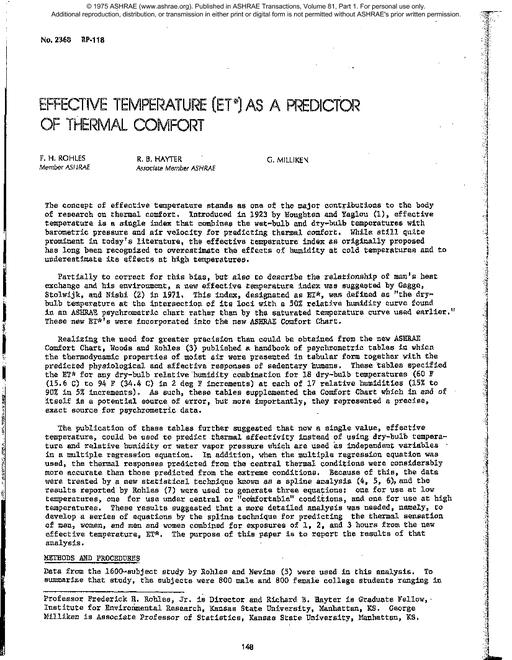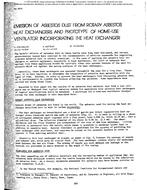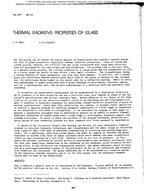-
-
Available Formats
- Options
- Availability
- Priced From ( in USD )
-
Available Formats
-
- Immediate download
- $16.00
- Add to Cart
Customers Who Bought This Also Bought
-

BO-2368 (RP 118) -- Effective Temperature (ET) as a Predi...
Priced From $16.00 -

BO-2365 -- Energy Uage and Relative Utilization Efficienc...
Priced From $16.00 -

BO-2375 -- Emission of Asbestos Dust from rotary Asbestos...
Priced From $16.00 -

BO-2363 -- Comparison between Measured Computer-Predicted...
Priced From $16.00
About This Item
Full Description
The increasing use of tinted and coated glasses in fenestration has created a renewed demand for data of glass properties, especially thermal radiative properties. Tests of tinted and coated glasses, however, are difficult and are often encountered with large data deviation, even for specimens of the same origin and specifications. The problem lies in the fact that, in a manufacturing process, the coating thickness on a coated glass and the homogeneity of tint in a tinted glass can hardly be kept within a very small tolerance. The transmittance, being a strong function of these parameters, can thus vary with samples. In addition, for a coated glass the reflectance depends heavily upon which side of the glass is exposed to the incident ray, the reflectance being higher on the coated side for a reflective coating. Renee an extensive measurement of glass properties with a broad coverage of wavelengths, incidence angles, and for a double-glazed unit, the surface combinations is a laborious work and extremely time consuming.
In actuality the experimental measurement can be supplemented by a theoretical prediction which promises to be more versatile and has a precision level only limited by those of .the material's specifications and optical constants used. Modern advances in the theory of the thin film optics as well as the radiative transfer theory in an absorbing and emitting medium have made it possible to formulate equations for predicting thermal radiative properties of glass of various constructions. Since thin film calculations are tedious, it becomes almost imperative to develop a computer program for handling automatic computation if a wide range of parameters as are described in this work is contemplated. It is therefore the purpose of this paper to present a computation procedure that is sufficiently general to be useful to predict thermal radiative properties of coated glass over a broad range of wavelengths, incidence angles, and coating structures. In order to check the validity of the program developed, predicted property values of some commercial glasses are also compared with those measured by experiments:
A search of the literature reveals that Berning and Berning (1) have developed a computer program to calculate intensity reflectance and transmittance and the phase change on reflection from a pile of thin films made of arbitrary combinations of absorbing and nonabsorbing materials. For a multilayer, thin-film coated glass, one might be tempted to consider the glass substrate as another film layer of large thickness which would exhibit the same interference effect as that occurring in a thin film. However, this is not true in practice. In fact, since the incident radiation is neither perfectly monochromatic nor perfectly collimated, plus the fact that small local variations in the thicKness of the substrate could introduce an averaging effect in the reflection and transmission behavior, the glass substrate cannot be treated as a wavelength-dependent element of the multilayer as far as its reflection and transmission behaviors are concerned. The glass substrate has to be considered as a separate entity in the radiative transfer analysis, and it is for this reason that the radiative transfer theory must be used in the formulation.





